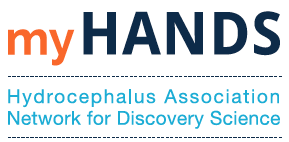Studies
The Hydrocephalus Association Network for Discovery Science (HANDS) Database
Search or Filter the studies below.
Are we missing an entry?
Submit an entry to this database.
Type of Study: Prevalence
Year: 2019
Etiology: Posttraumatic Hydrocephalus
Study Type: Prospective
Age: Adult
# Screened: 143 patients
Population: Traumatic Brain Injury
Prevalence: Incidence: 30.1% developed posttraumatic hydrocephalus following decompressive craniectomy
Type of Study: Prevalence
Incidence of Hydrocephalus in Traumatic Brain Injury: A Nationwide Population-Based Cohort Study
Year: 2019
Etiology: Posttraumatic Hydrocephalus
Study Type: Retrospective
Age: All
# Screened: 2,303 patients
Population: Traumatic Brain Injury with SAH
Prevalence: Incidence: 20.05/10,000 during 24-month follow-up period
Type of Study: Prevalence
Incidence of Hydrocephalus in Traumatic Brain Injury: A Nationwide Population-Based Cohort Study
Year: 2019
Etiology: Posttraumatic Hydrocephalus
Study Type: Retrospective
Age: All
# Screened: 21,472 patients
Population: Traumatic Brain Injury w/o SAH
Prevalence: Incidence: 5.28/10,000 during 24-month follow-up period
Type of Study: Prevalence
Clinical Features of and Risk Factors for Hydrocephalus in Childhood Bacterial Meningitis
Year: 2019
Etiology: Post Infectious Hydrocephalus
Study Type: Retrospective
Age: Child
# Screened: 267 patients
Population: Bacterial Meningitis
Prevalence: Incidence: 9.4% developed post infectious hydrocephalus
Type of Study: Prevalence
Prevalence of Idiopathic Normal Pressure Hydrocephalus: A Prospective, Population-Based Study
Year: 2019
Etiology: Idiopathic Normal Pressure Hydrocephalus
Study Type: Prospective
Age: Adult
# Screened: 673 inhabitants
Population: Adult
Prevalence: Incidence: 3.7% had probable NPH (according to American-European guidelines); 1.5% had possible NPH w/ MRI support or definite NPH (according to Japanese guidelines)
Type of Study: Prevalence
Incidence, Comorbidities, and Mortality in Idiopathic Normal Pressure Hydrocephalus
Year: 2018
Etiology: Idiopathic Normal Pressure Hydrocephalus
Study Type: Retrospective
Age: Adult
# Screened: catchement population of KUH Neurosurgery
Population: Adult
Prevalence: Incidence: 1.84/100,000 (range 0.8-4.5 per 100,000 per year)
Type of Study: Prevalence
Year: 2018
Etiology: Post Hemorrhagic Hydrocephalus
Study Type: Meta-Analysis
Age: All
# Screened: 1159 patients
Population: Angiogram-Negative Perimesencephalic Subarachnoid Hemorrhage
Prevalence: Incidence: 9.7% developed post hemoorhagic hydrocephalus
Type of Study: Prevalence
Year: 2018
Etiology: Post Hemorrhagic Hydrocephalus
Study Type: Meta-Analysis
Age: All
# Screened: 1270 patients
Population: Angiogram-Negative Non-Perimesencephalic Subarachnoid Hemorrhage
Prevalence: Incidence: 28.3% developed post hemorrhagic hydrocephalus
Type of Study: Prevalence
Year: 2018
Etiology: Posttraumatic Hydrocephalus
Study Type: Retrospective
Age: Child
# Screened: 124,444 patients
Population: Traumatic Brain Injury
Prevalence: Incidence: 1% developed posttraumatic hydrocephalus
Type of Study: Prevalence
Year: 2018
Etiology: Post Hemorrhagic Hydrocephalus
Study Type: Prospective
Age: Adult
# Screened: 566 patients
Population: Subarachnoid Hemorrhage
Prevalence: Incidence: 22% developed post hemorrhaigc hydrocephalus
Type of Study: Prevalence
Year: 2018
Etiology: Congenital Hydrocephalus
Study Type: Retrospective
Age: Neonate
# Screened: 176,223 births
Population: Neonate w/ Birth Defects
Prevalence: Incidence: 20.3/10,000 births
Type of Study: Prevalence
Year: 2018
Etiology: Isolated Congenital Hydrocephalus
Study Type: Retrospective
Age: Neonate
# Screened: 176,223 births
Population: Neonate w/ Birth Defects
Prevalence: Incidence: 8.3/10,000 births
Type of Study: Prevalence
Year: 2018
Etiology: All Hydrocephalus
Study Type: Meta-Analysis
Age: All
# Screened: 171,558,651 people
Population: All
Prevalence: Incidence: 84.7/100,000
Type of Study: Prevalence
Year: 2018
Etiology: All Hydrocephalus
Study Type: Meta-Analysis
Age: Child
# Screened: 28,990,298 people
Population: Child
Prevalence: Incidence: 87.8/100,000
Type of Study: Prevalence
Year: 2018
Etiology: All Hydrocephalus
Study Type: Meta-Analysis
Age: Adult
# Screened: 14,798,172 people
Population: Adult
Prevalence: Incidence: 10.9/100,000
Type of Study: Prevalence
Year: 2018
Etiology: Idiopathic Normal Pressure Hydrocephalus
Study Type: Meta-Analysis
Age: Adult
# Screened: 127,770,181 people
Population: Adult
Prevalence: Incidence: 174.8/100,000
Type of Study: Prevalence
Year: 2018
Etiology: Congenital Hydrocephalus
Study Type: Meta-Analysis
Age: Neonate
# Screened: 42 ICBDSR surveillance registries
Population: Neonate
Prevalence: Incidence: 81.2/100,000
Type of Study: Prevalence
Year: 2018
Etiology: Isolated Congenital Hydrocephalus
Study Type: Meta-Analysis
Age: Neonate
# Screened: 42 ICBDSR surveillance registries
Population: Neonate
Prevalence: Incidence: 49.5/100,000
Type of Study: Prevalence
Global hydrocephalus epidemiology and incidence: systematic review and meta-analysis
Year: 2018
Etiology: Congenital Hydrocephalus
Study Type: Meta-Analysis
Age: Neonate
# Screened: 78 articles reviewed
Population: Neonate
Prevalence: Incidence: 145/100,000 births
Type of Study: Prevalence
Global hydrocephalus epidemiology and incidence: systematic review and meta-analysis
Year: 2018
Etiology: Congenital Hydrocephalus
Study Type: Meta-Analysis
Age: Neonate
# Screened: 78 articles reviewed
Population: Neonate
Prevalence: Incidence: 316/100,000 births

